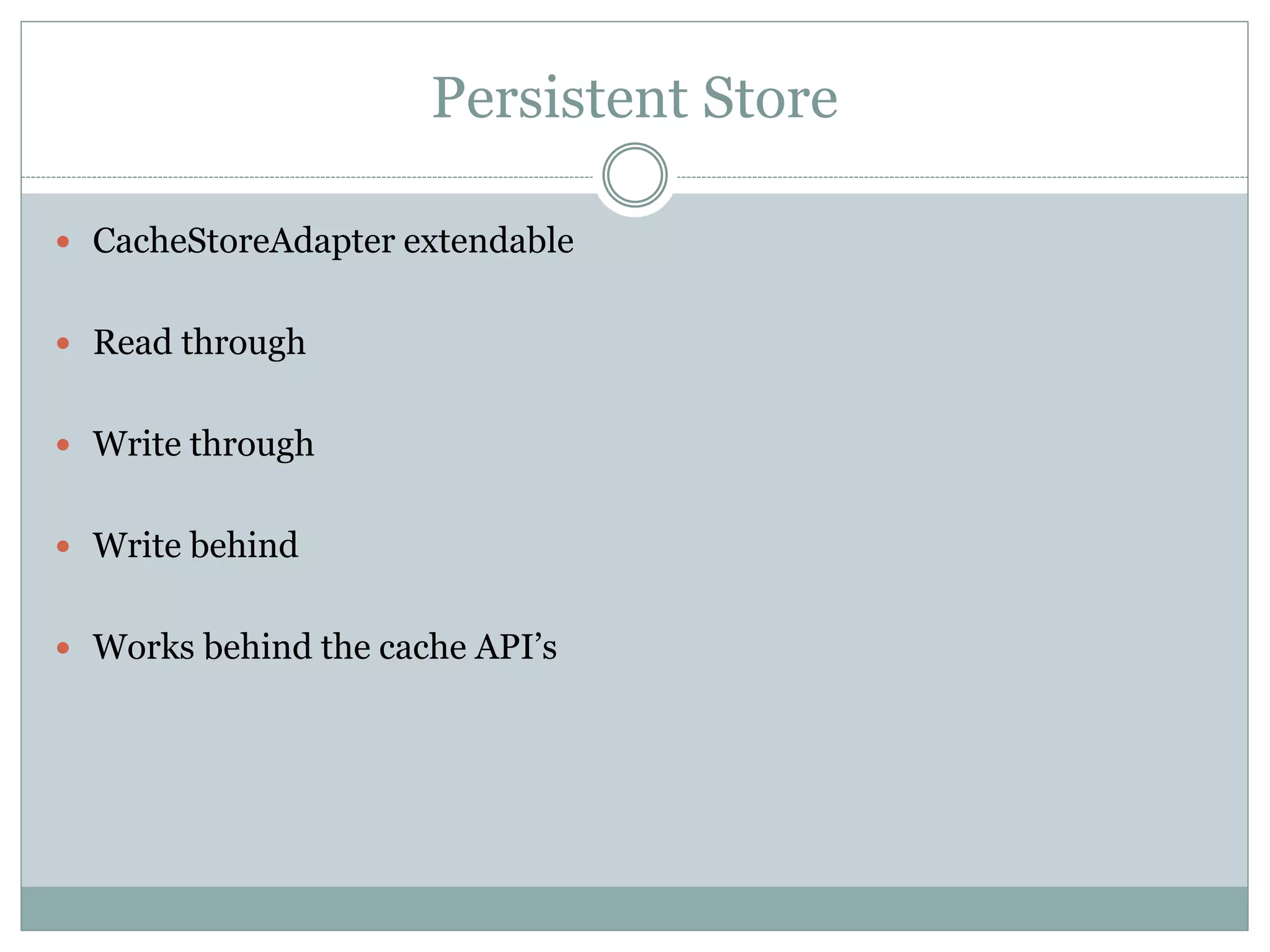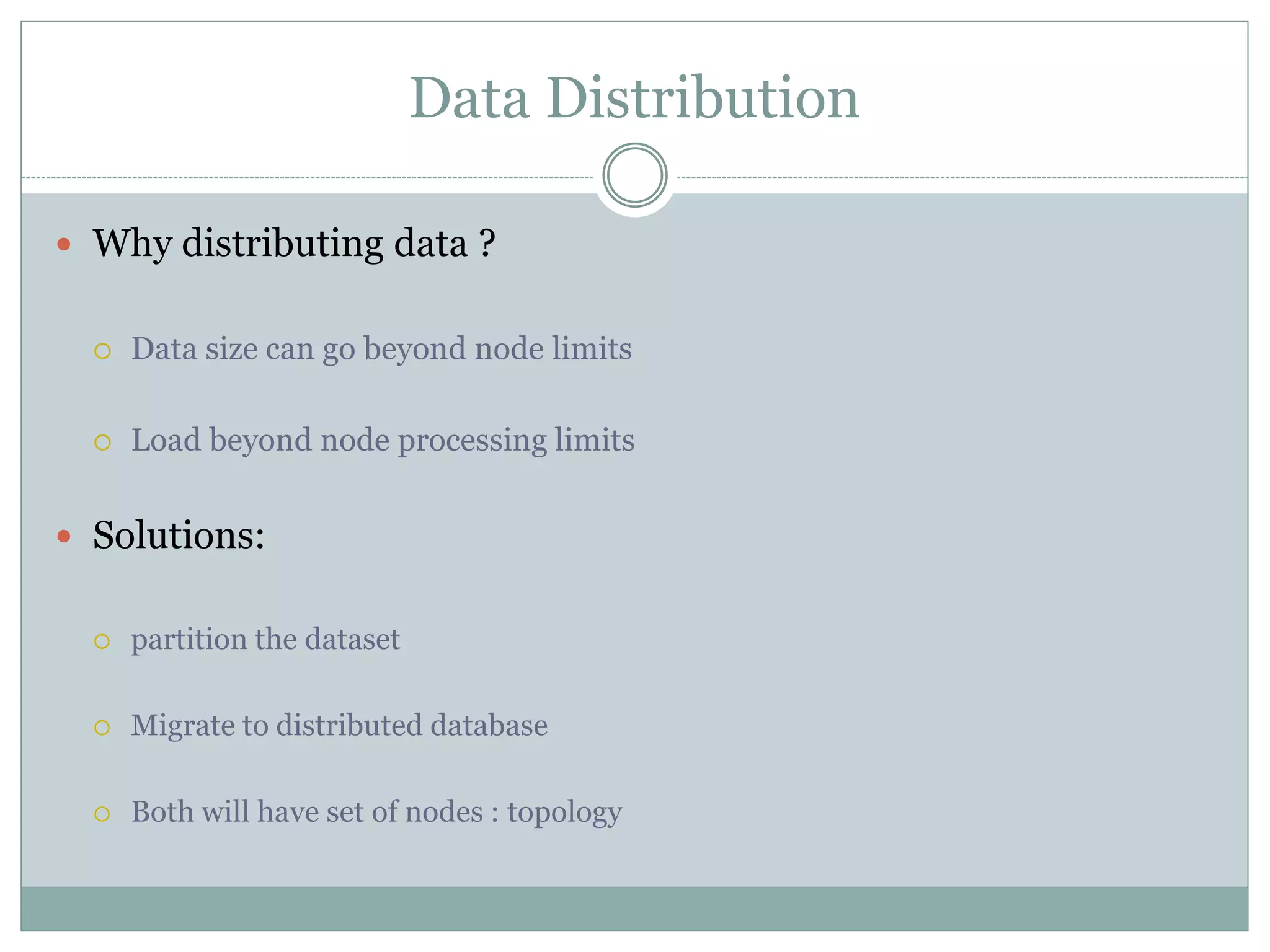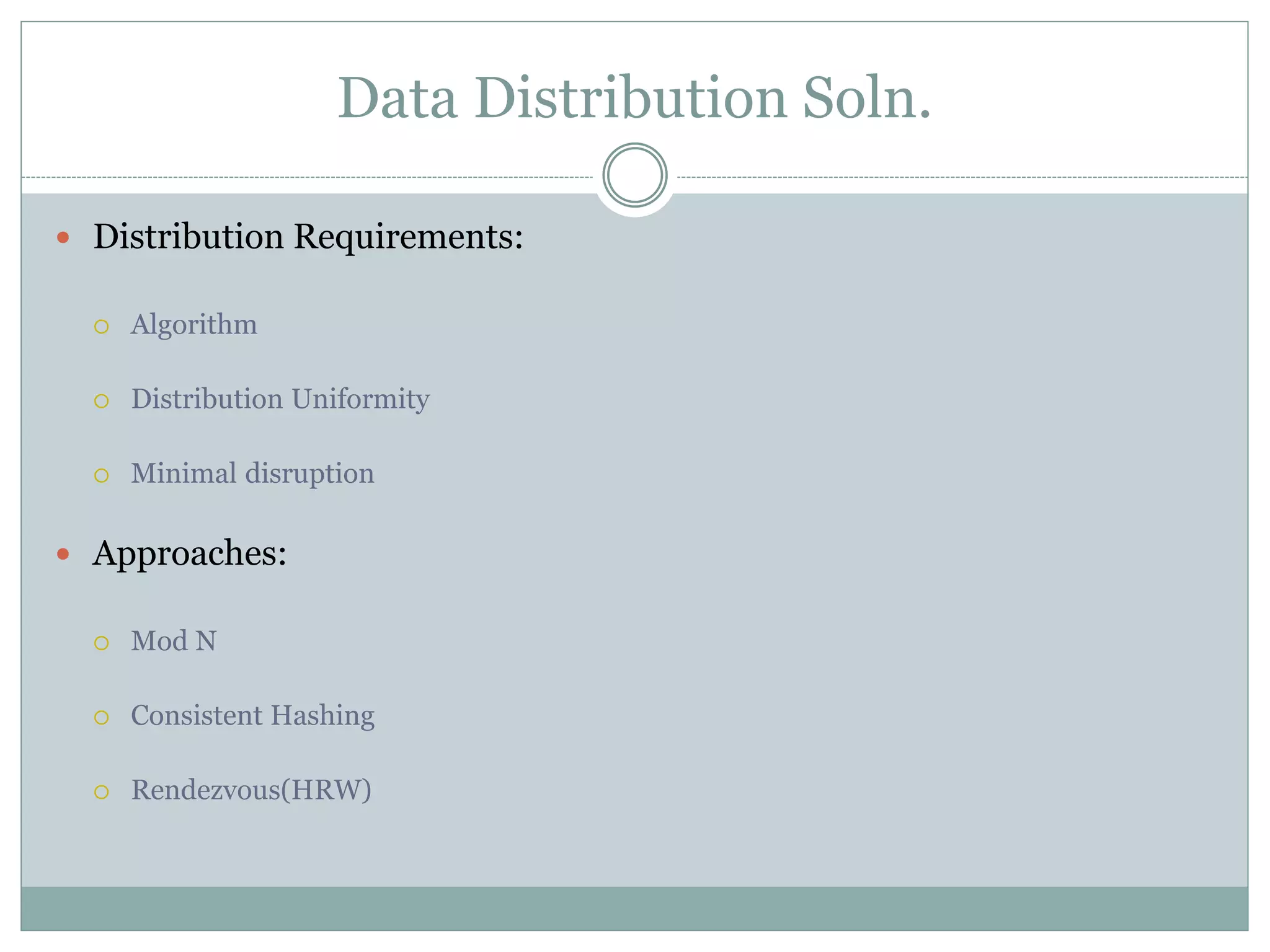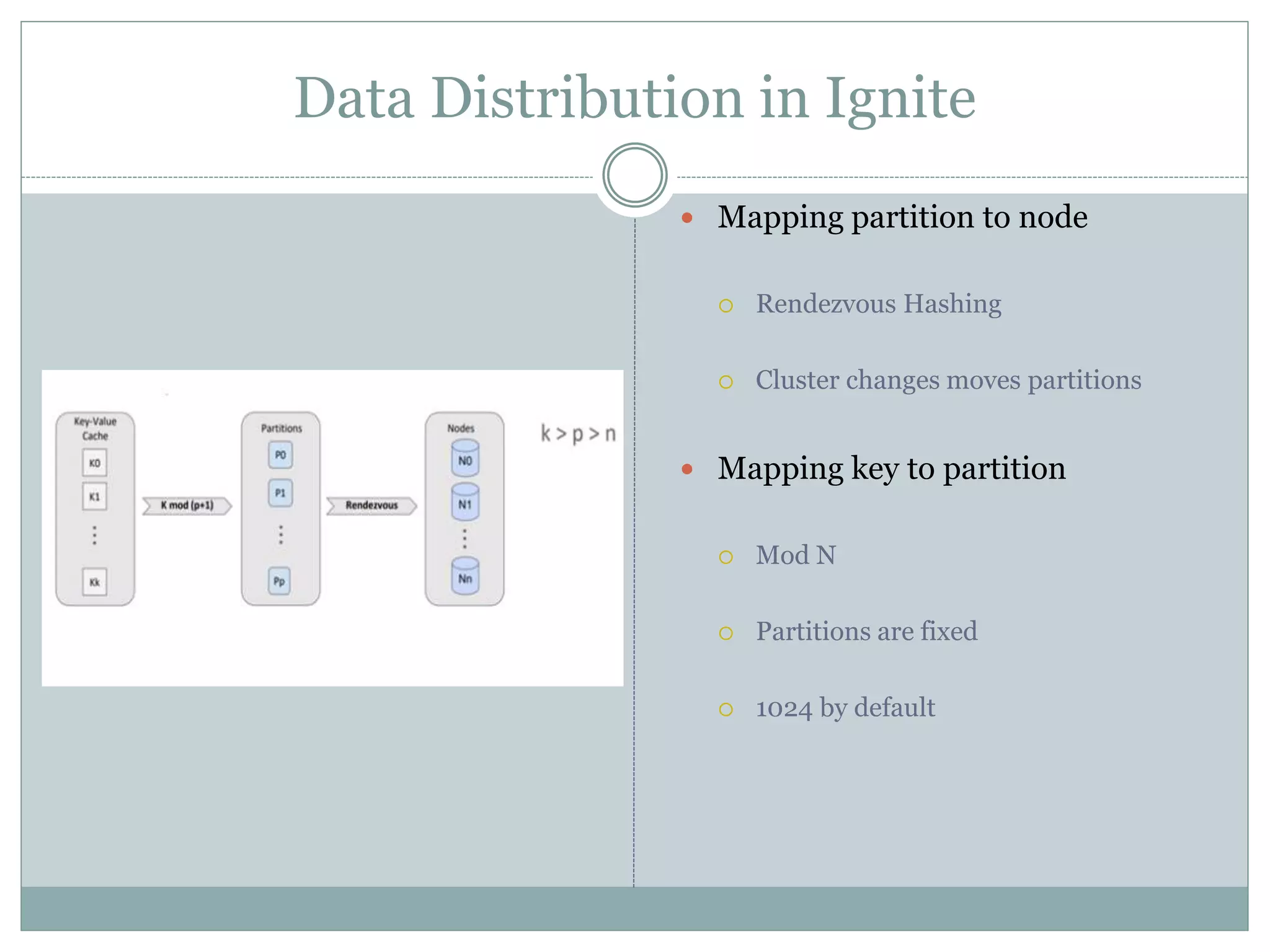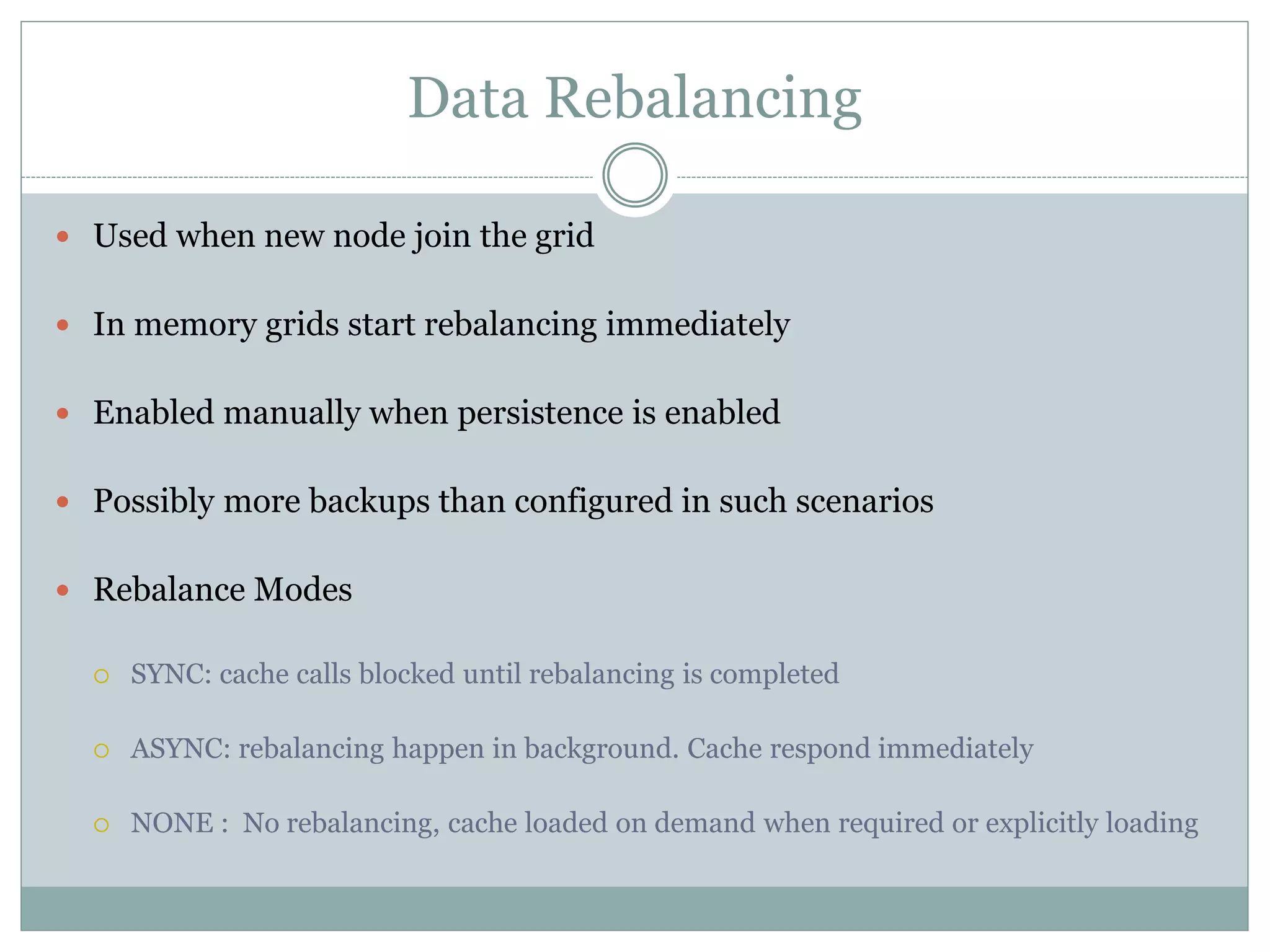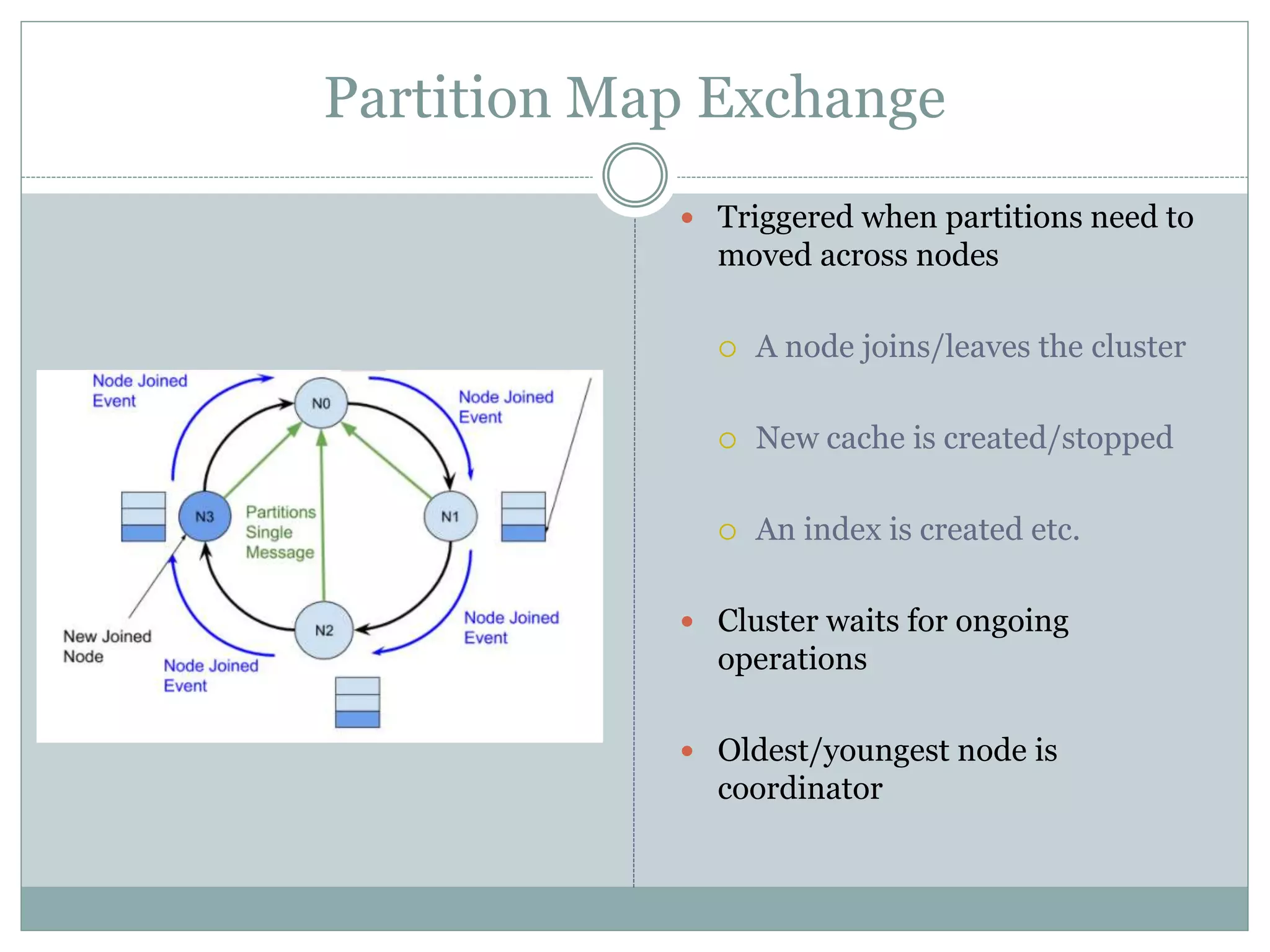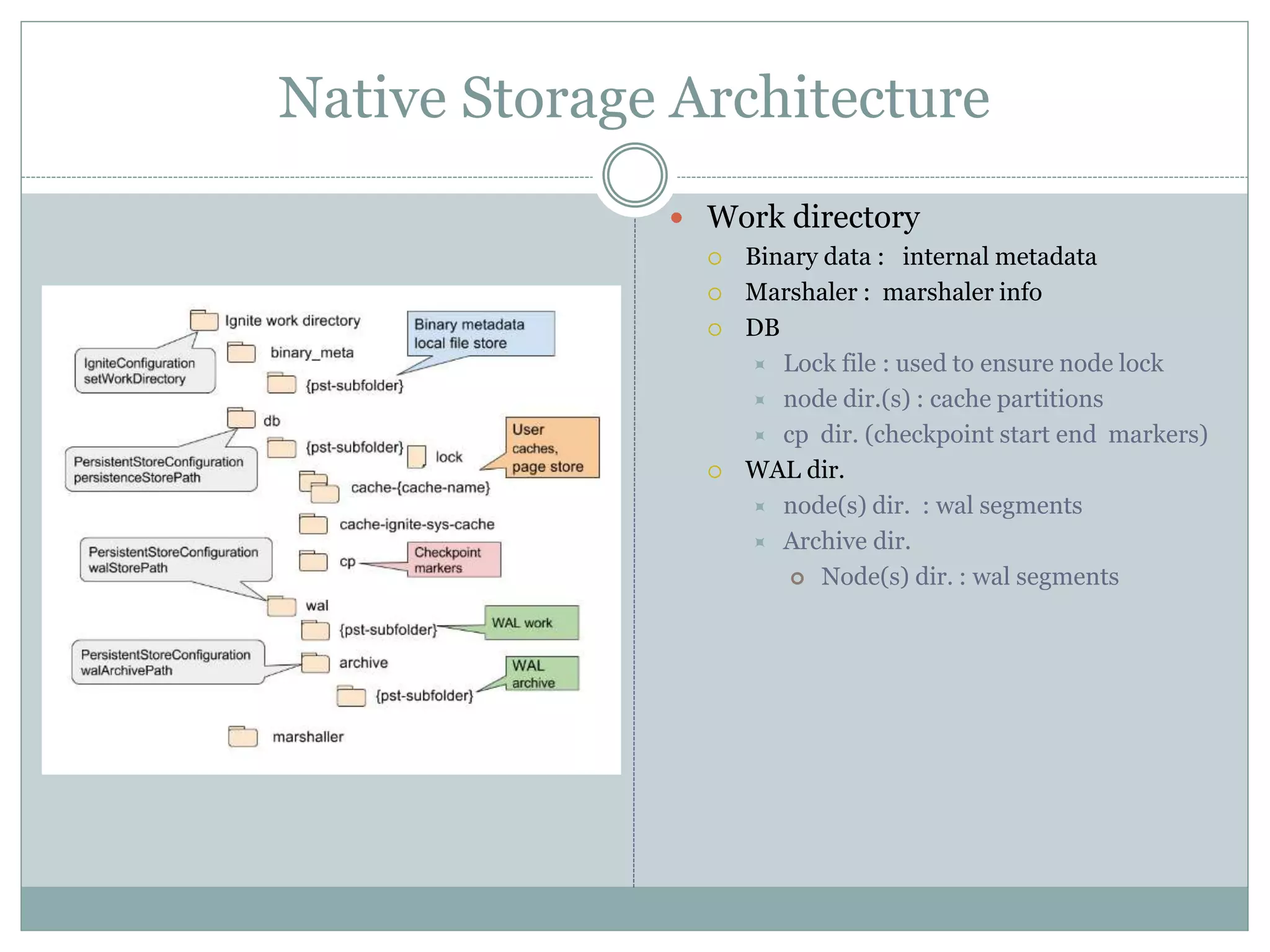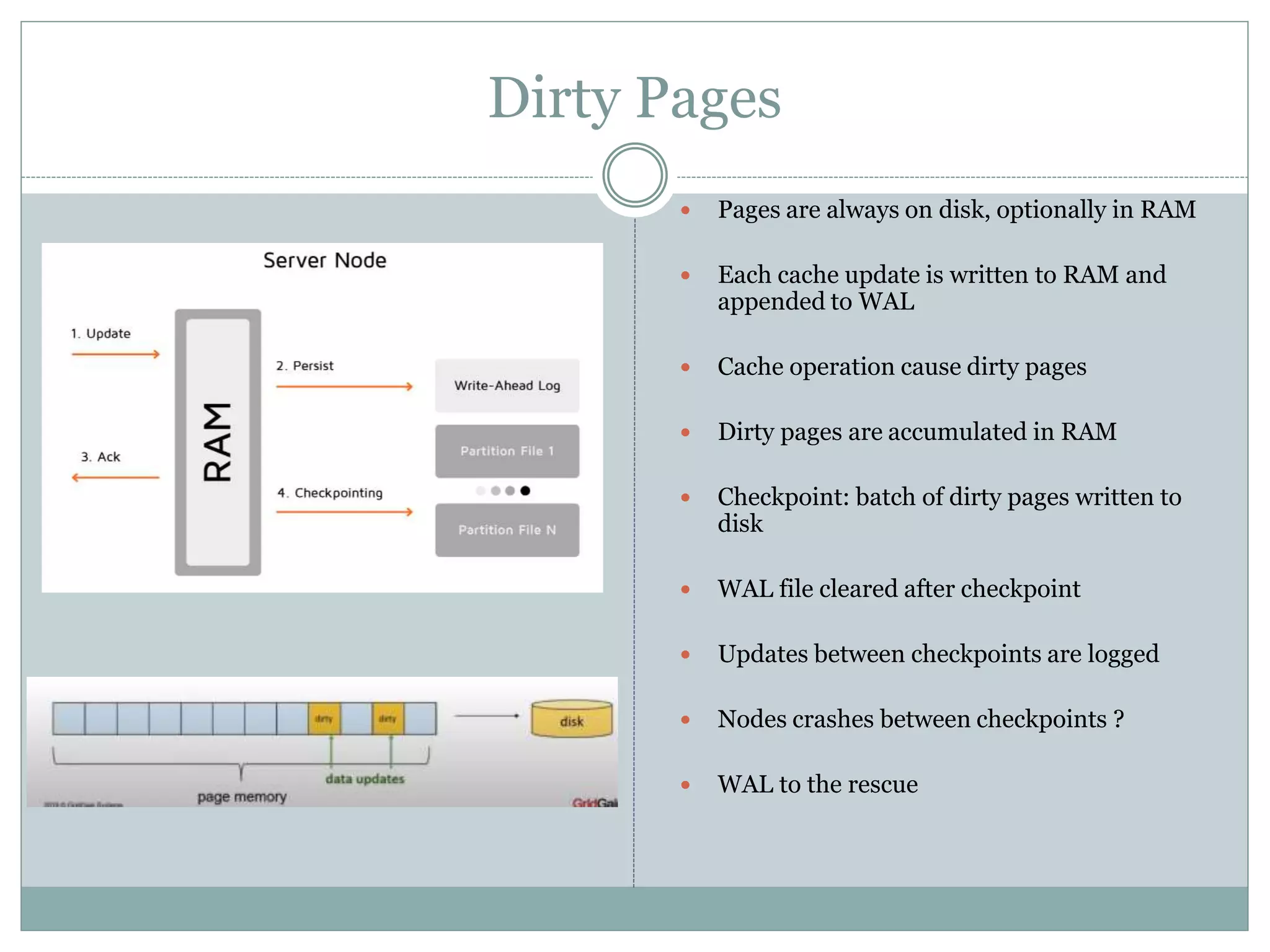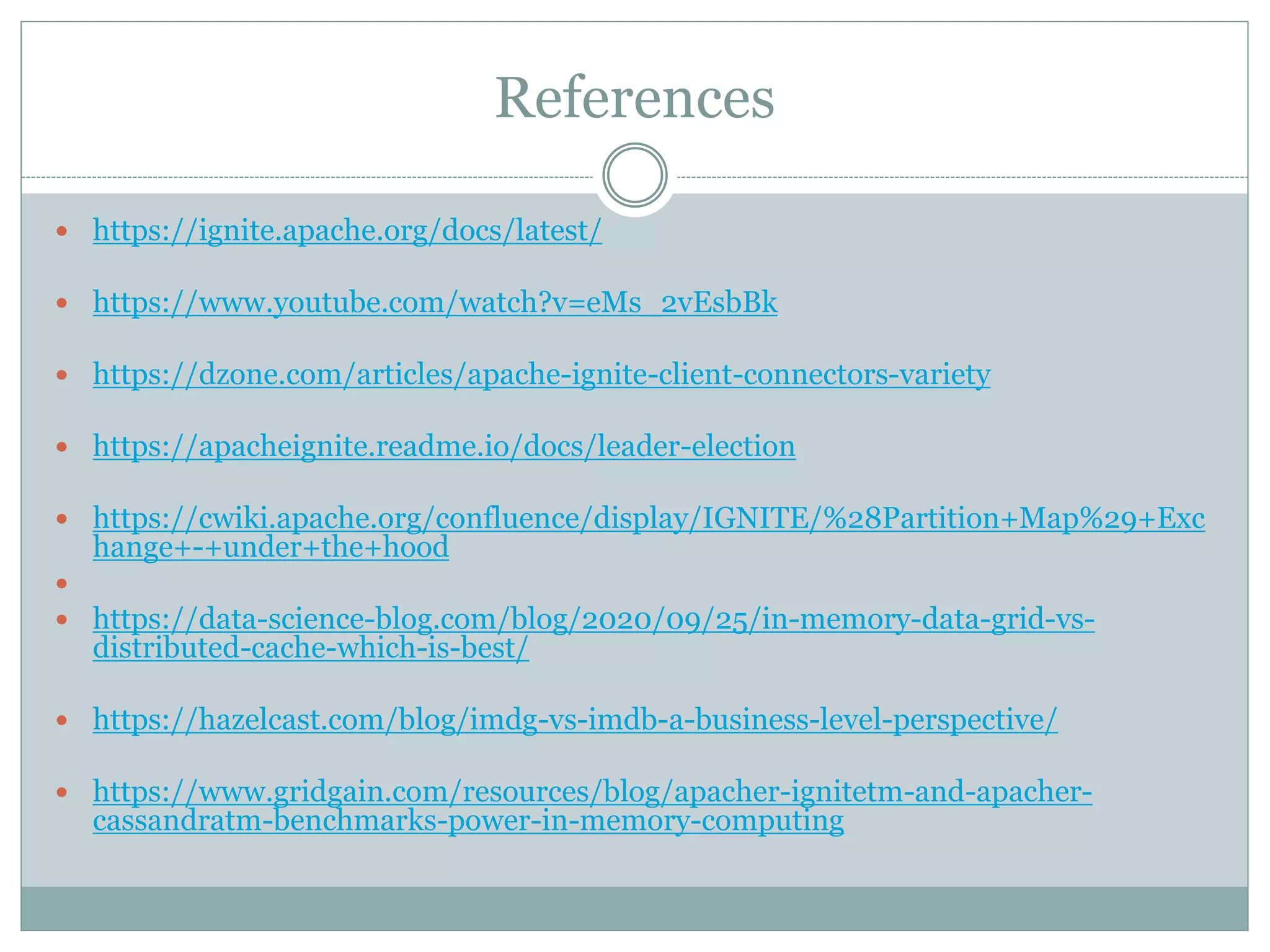The document provides an overview of Apache Ignite, focusing on its capabilities as a distributed in-memory data grid and cache, highlighting its advantages in performance and scalability. Key features discussed include data partitioning, eviction policies, compute tasks, and different query types, alongside a comparison with other technologies like Cassandra. Several best practices and future steps for further exploration of Apache Ignite are also outlined.
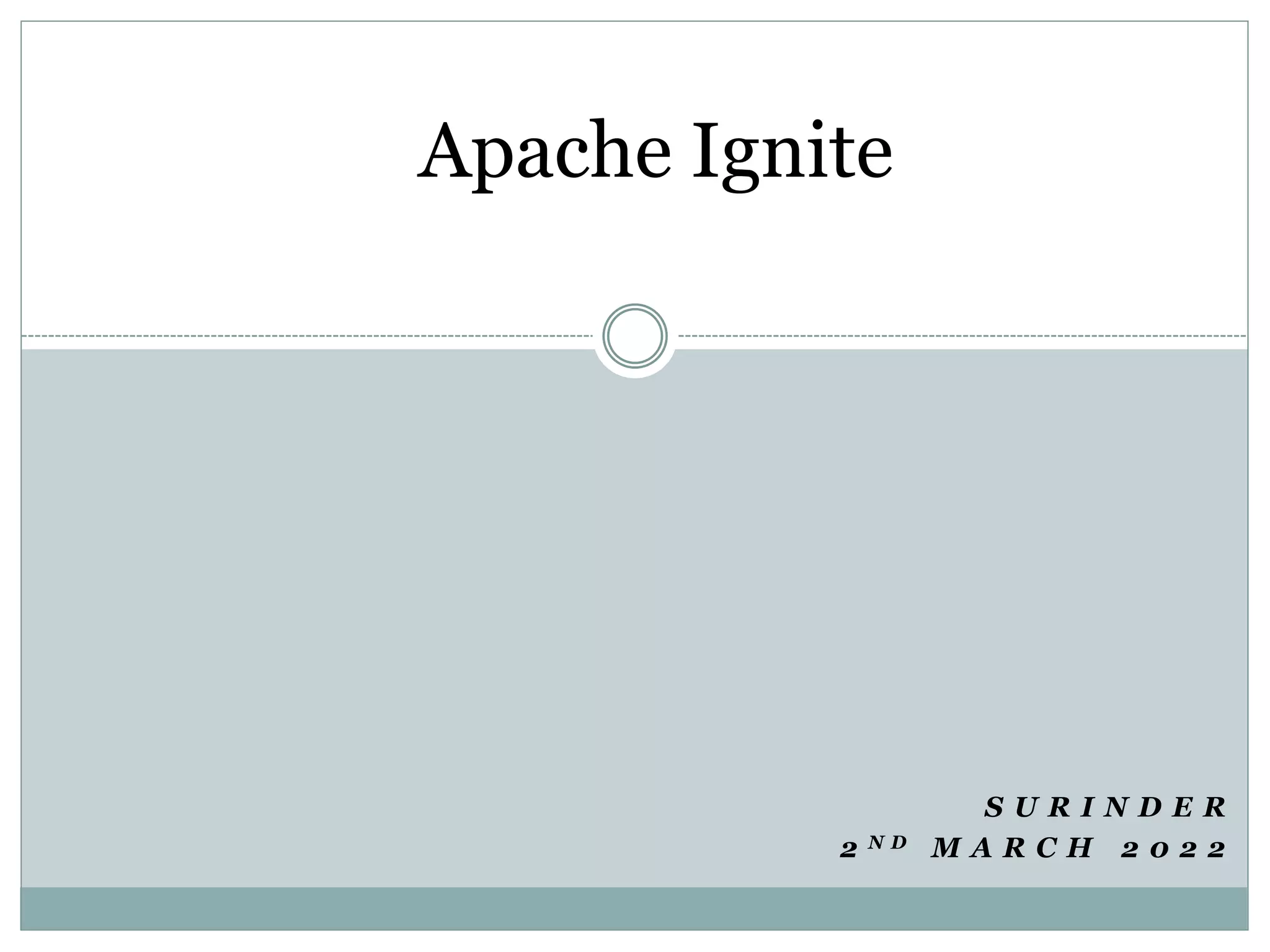

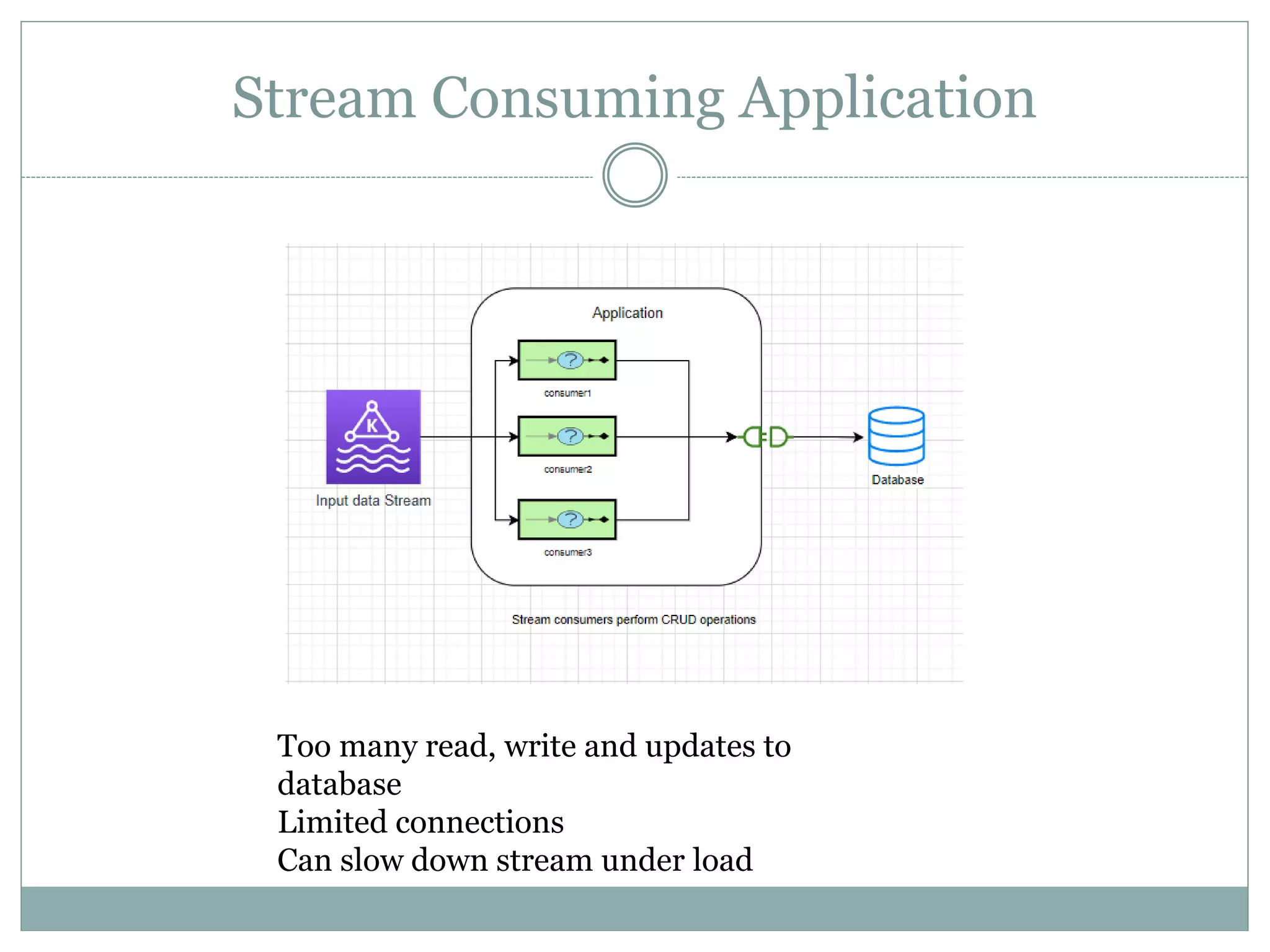
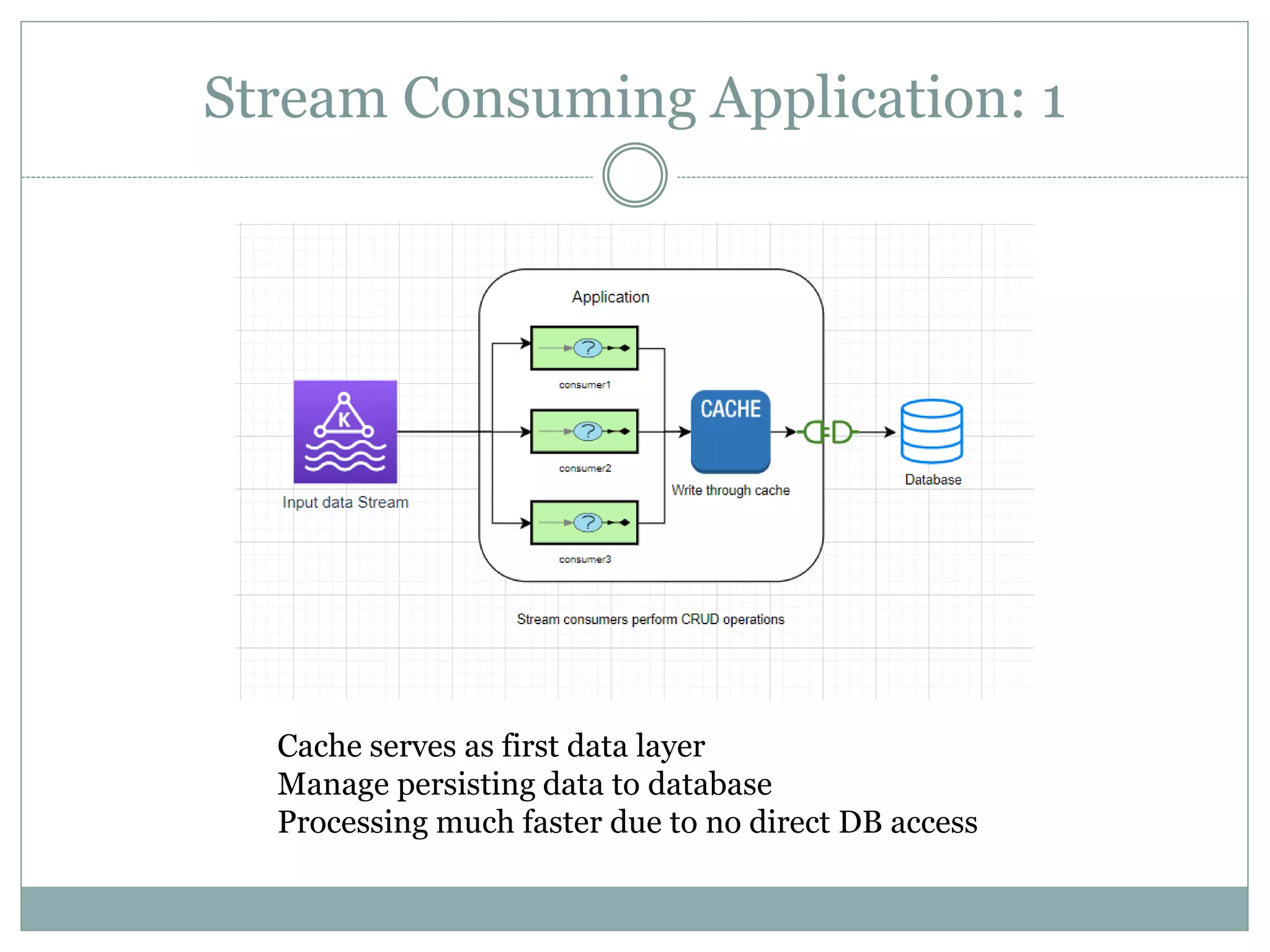
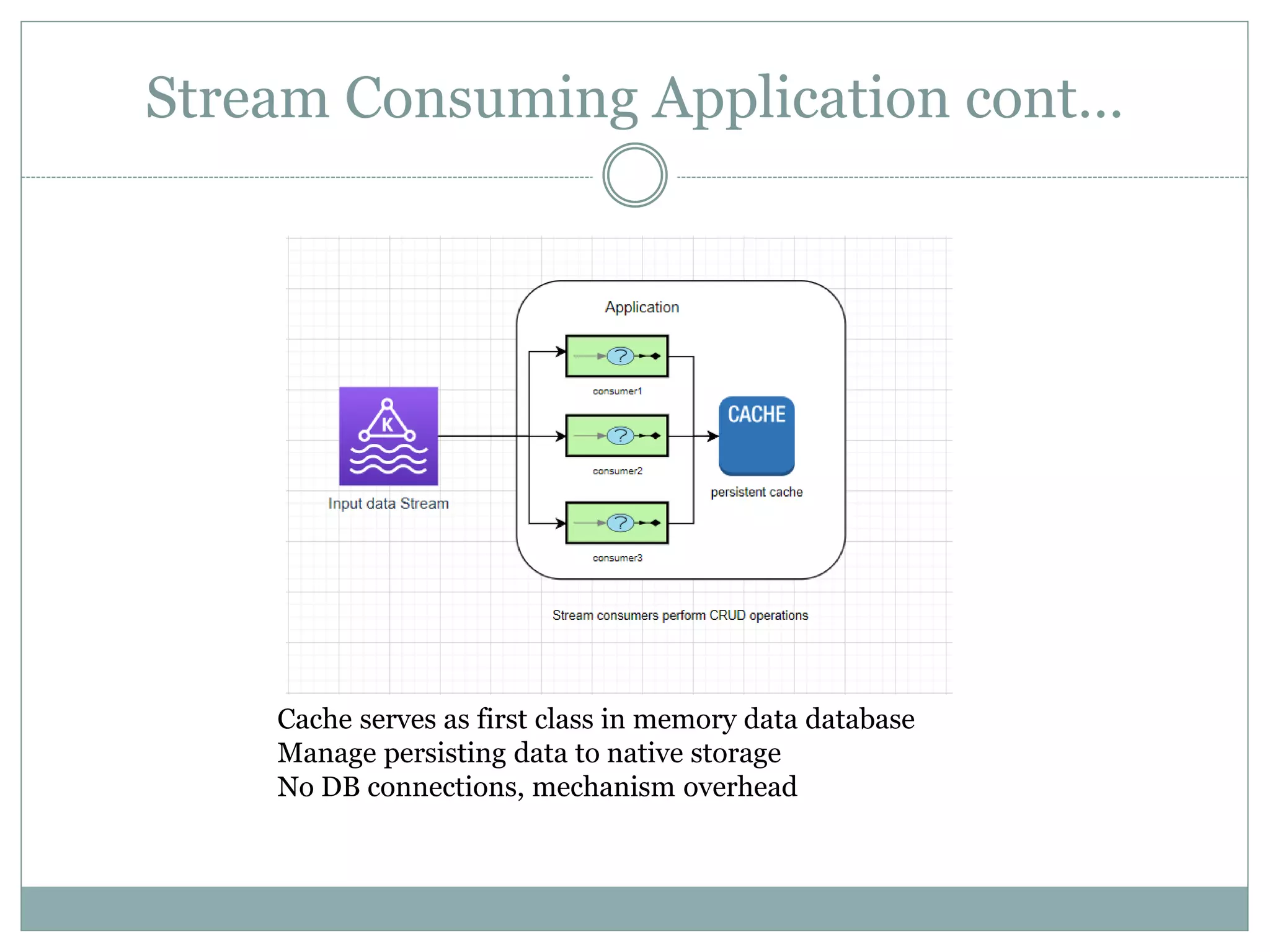

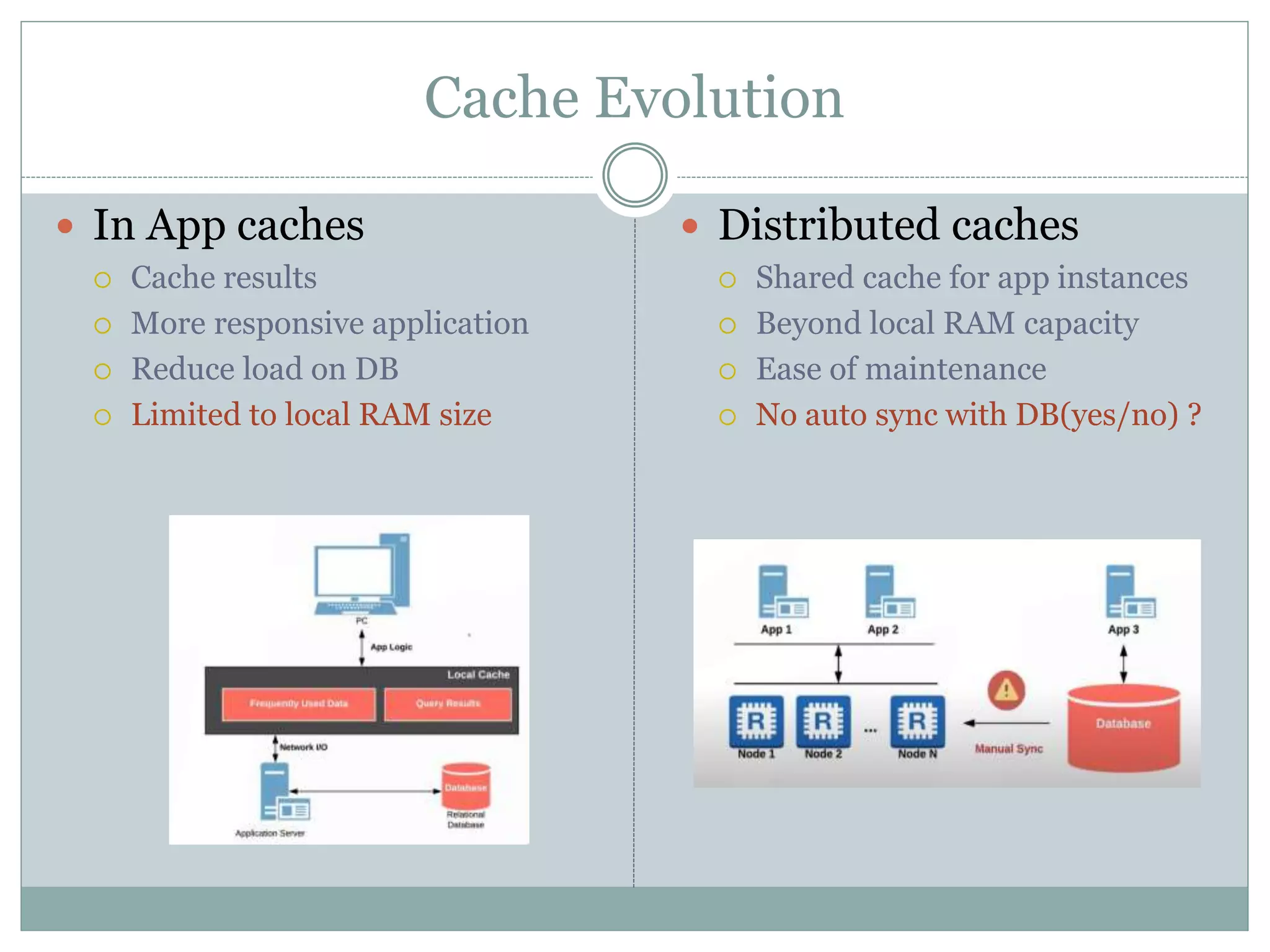
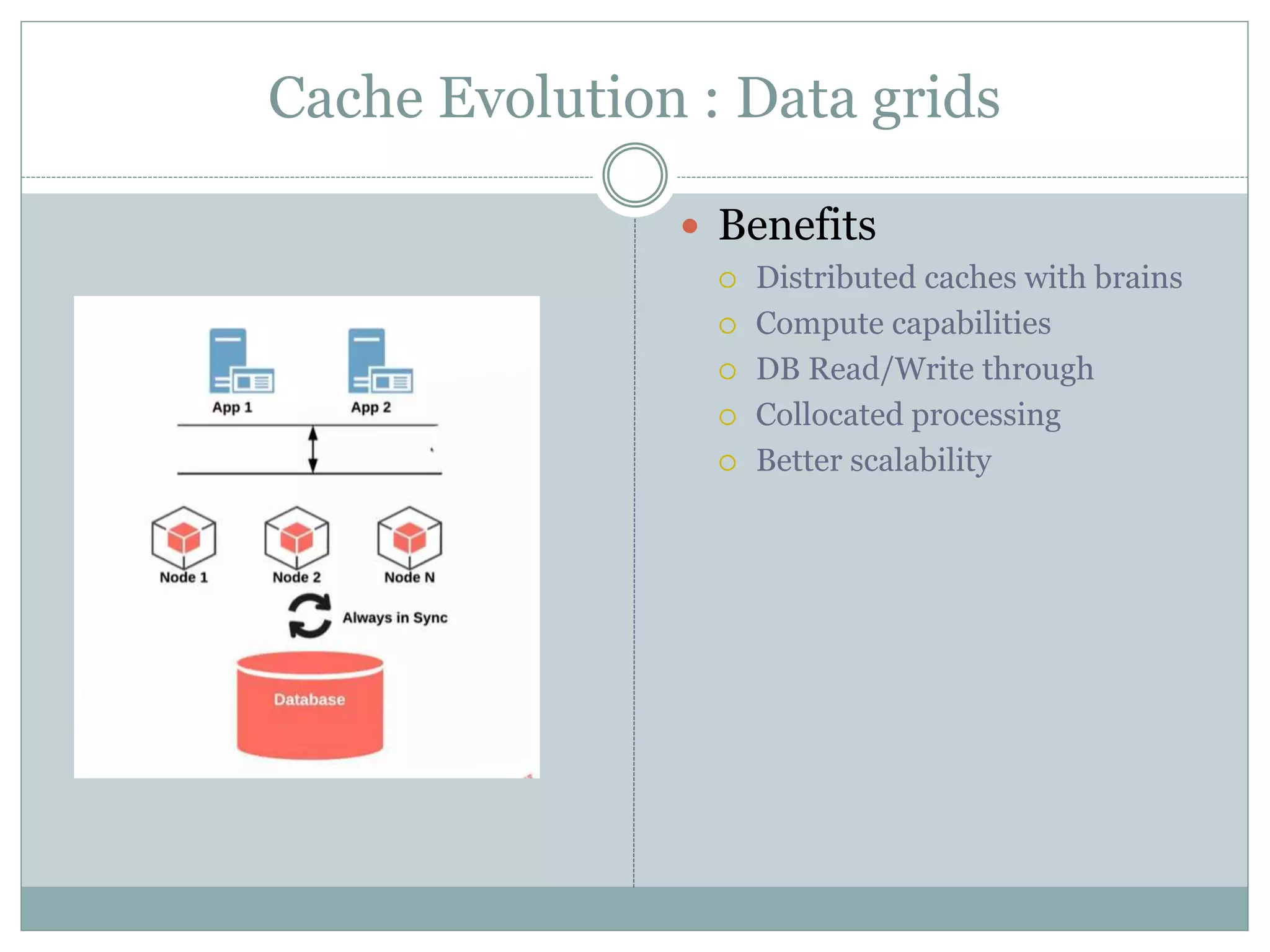

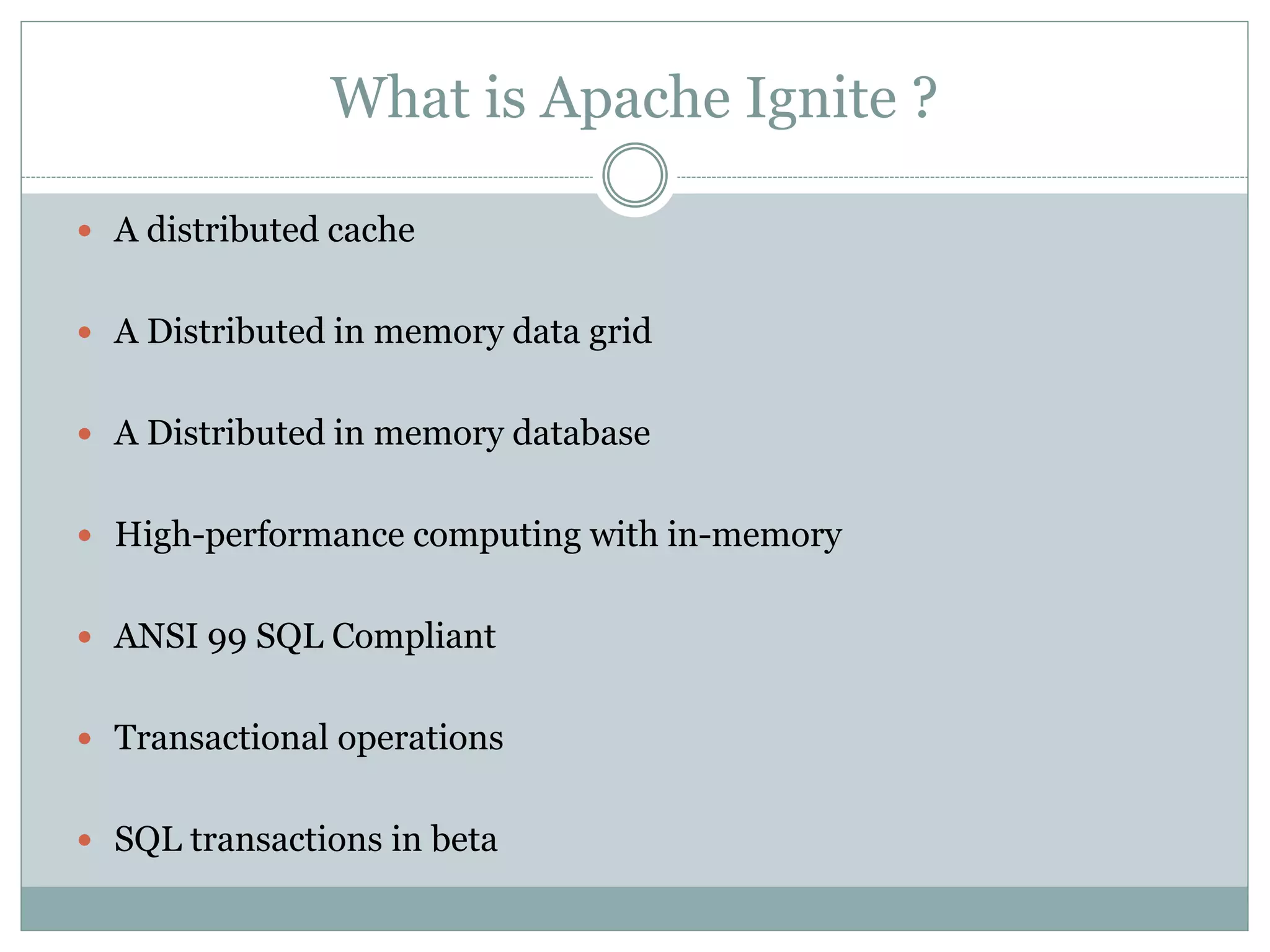
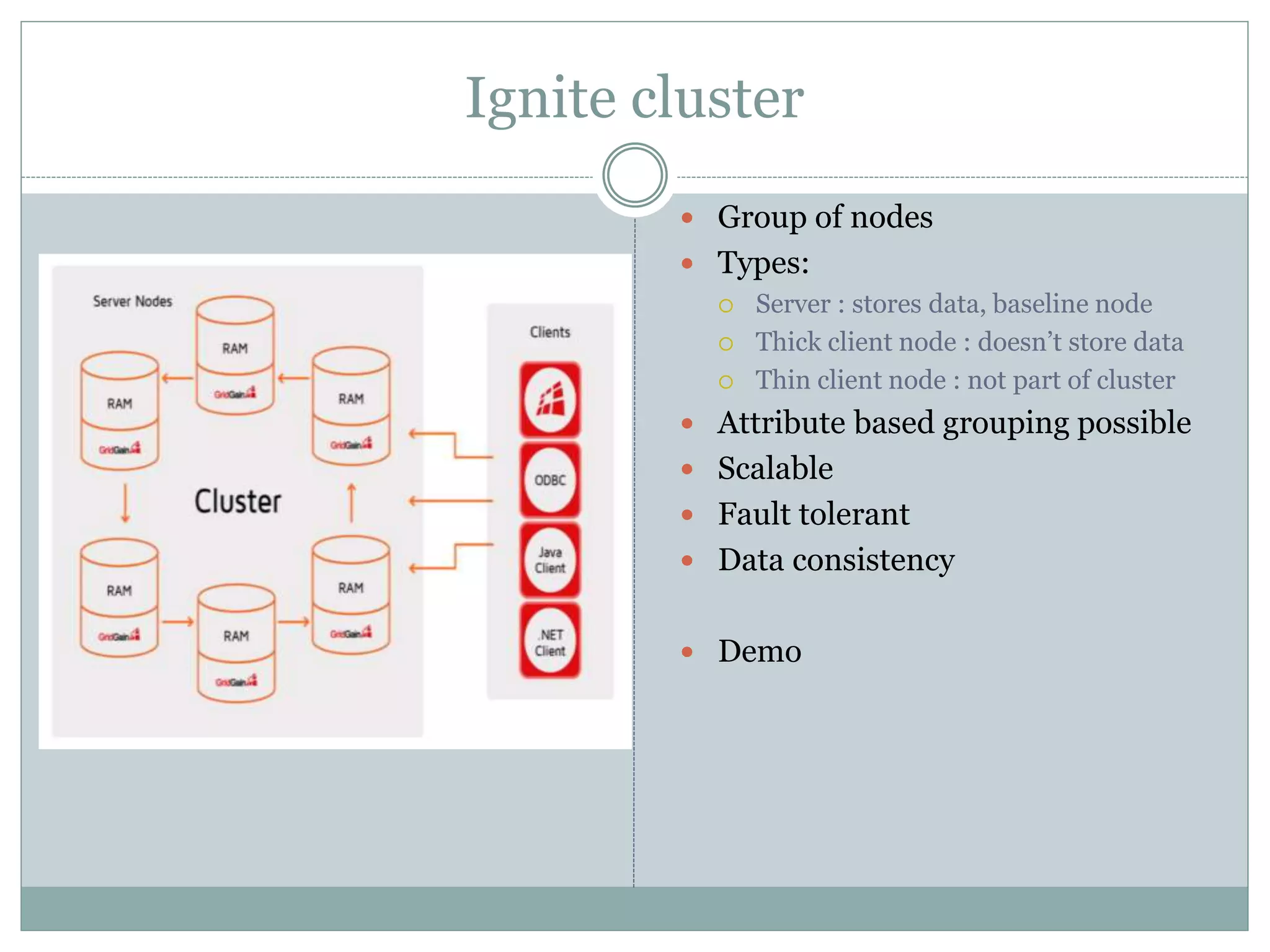
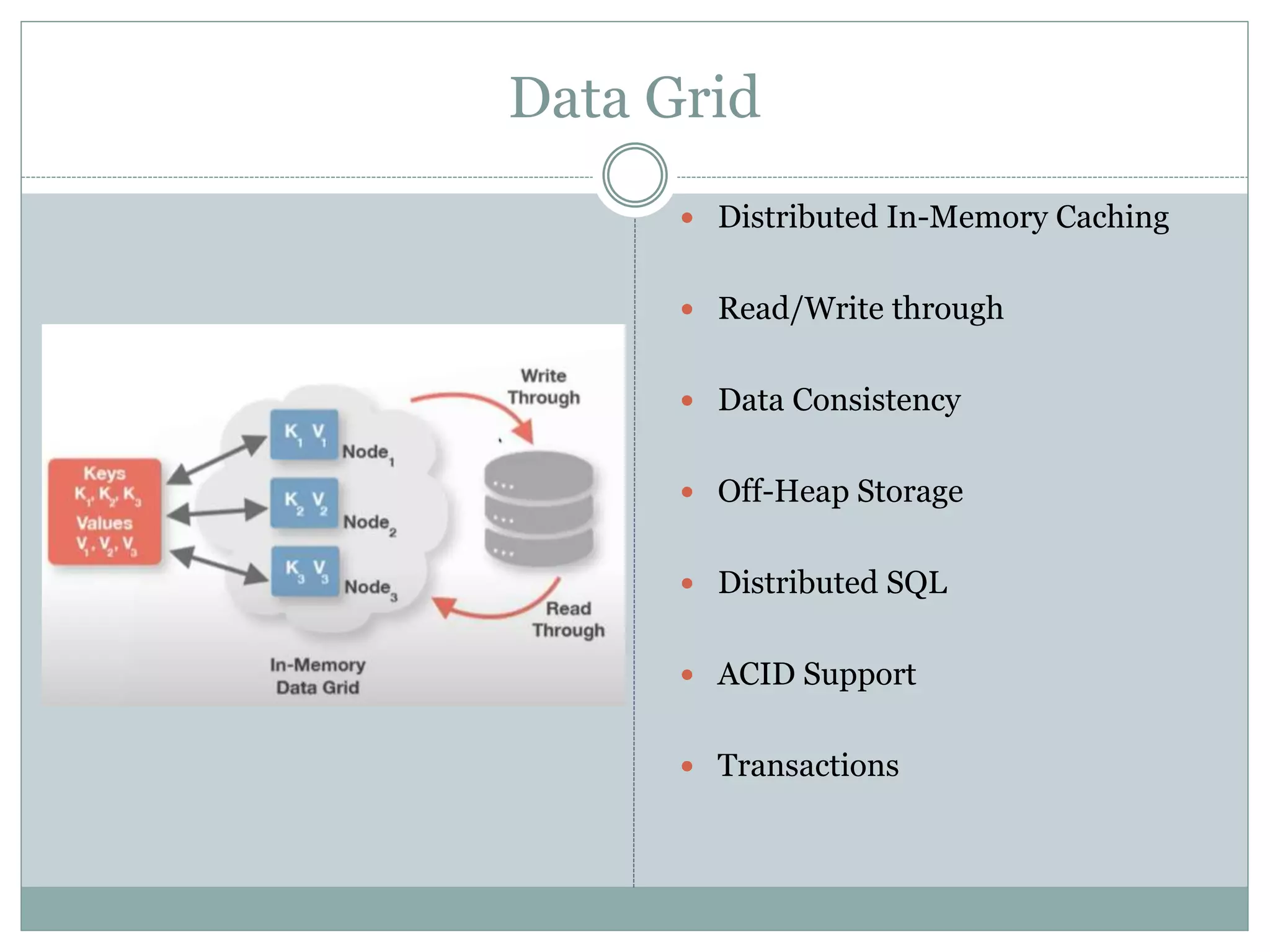
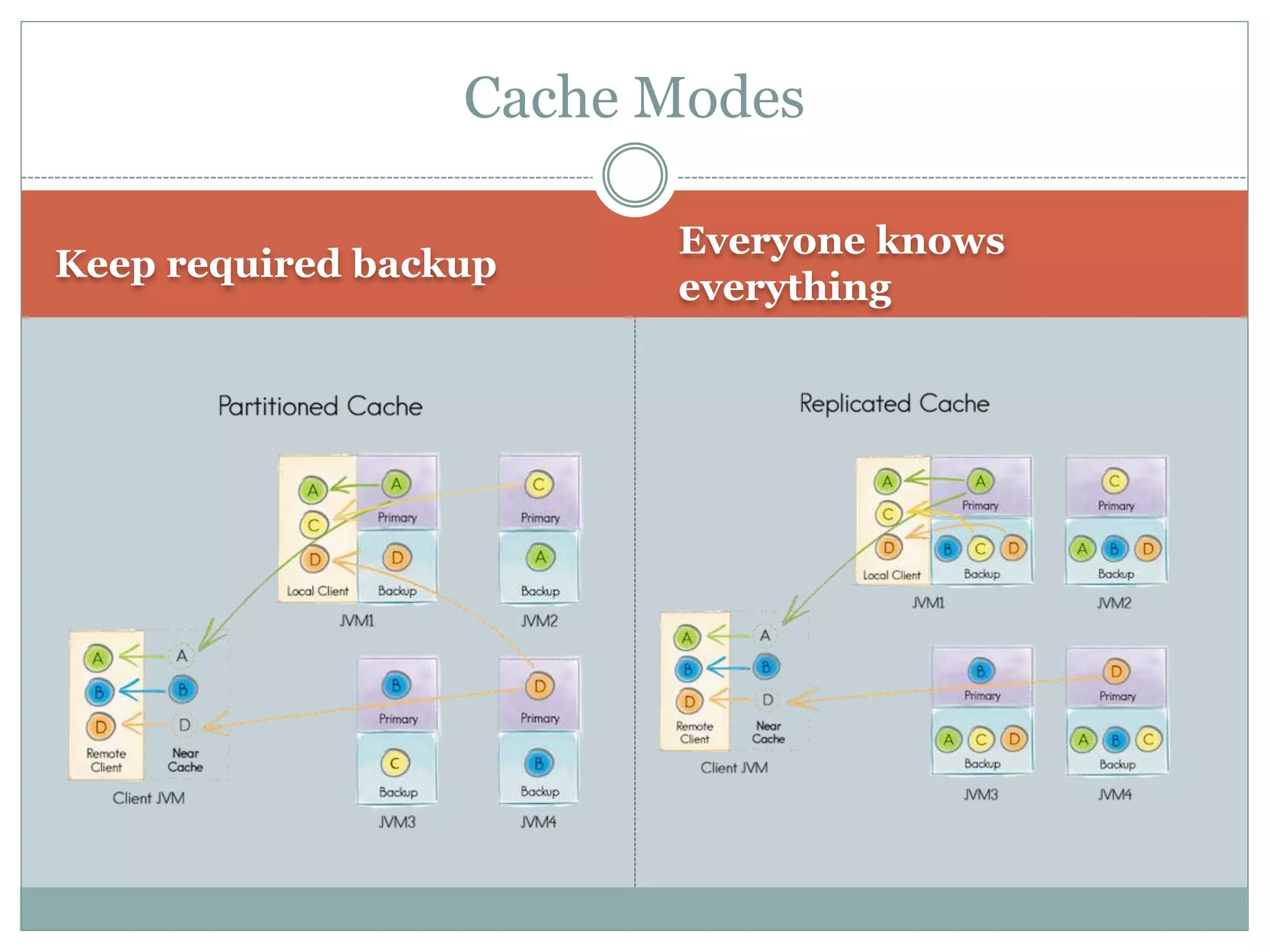



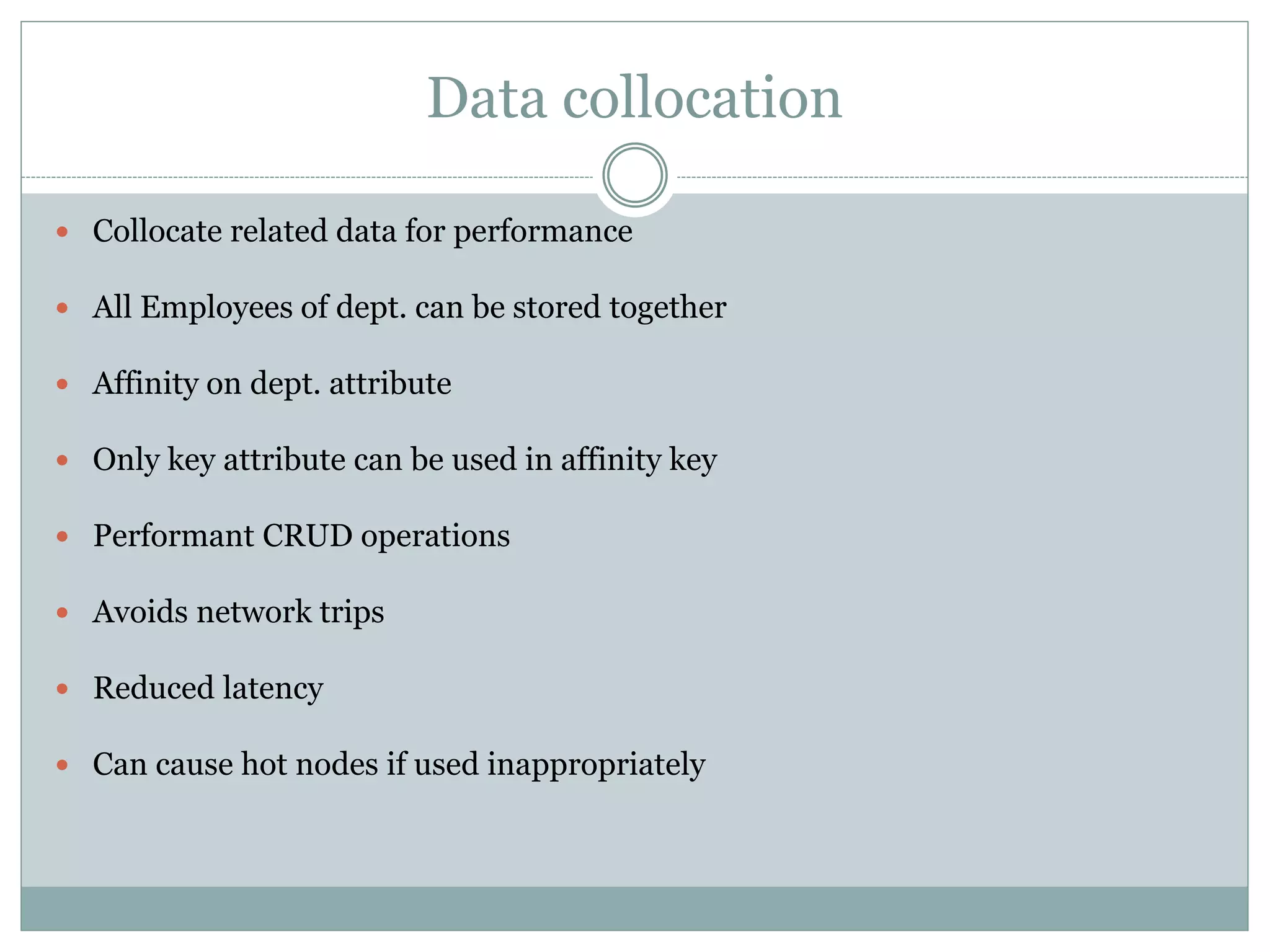

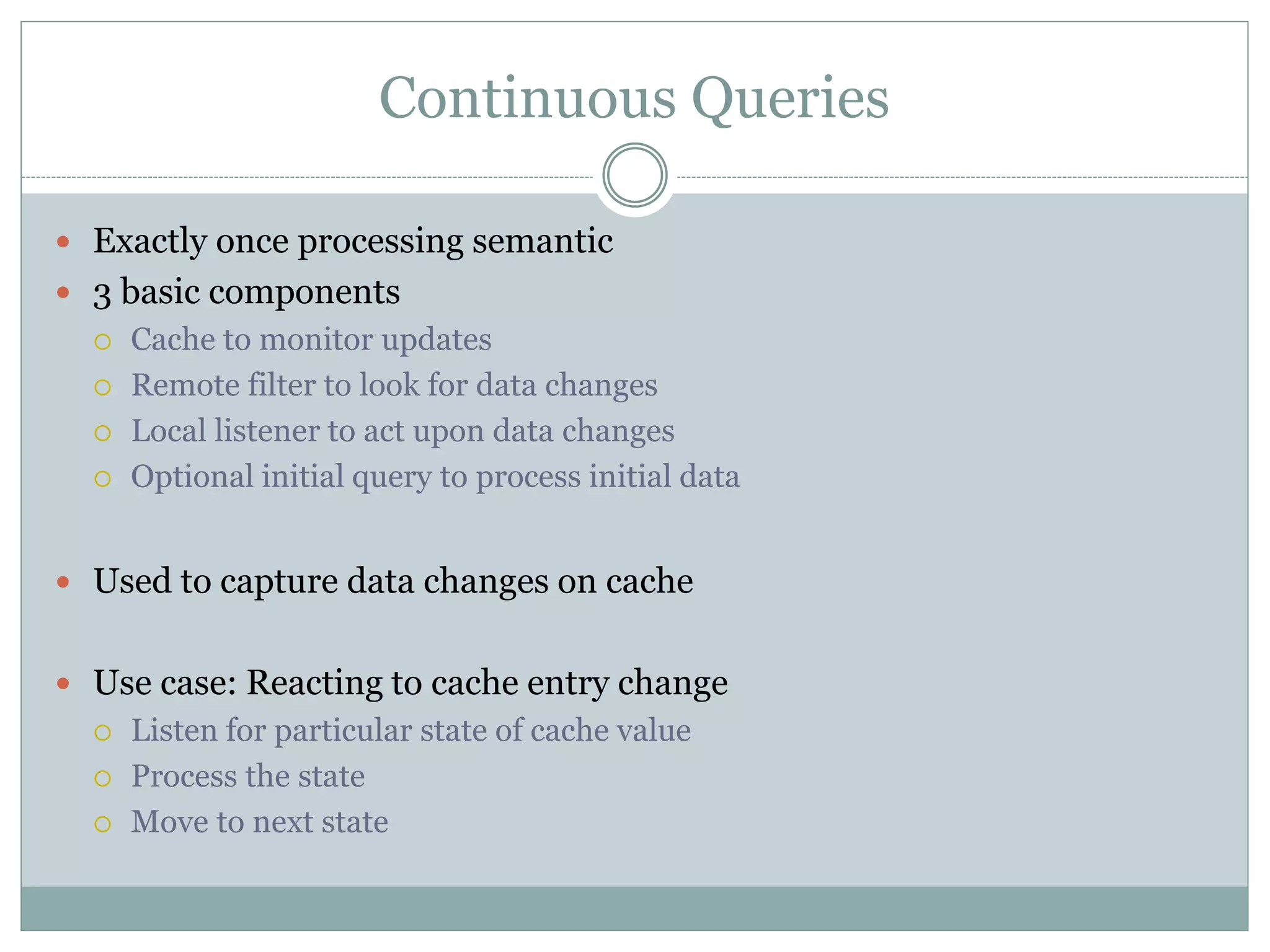
![Eviction Policies On Heap [cache level] LRU : Recommended when in doubt FIFO : It ignores the element access order Sorted : Sorted according to key for order Off Heap [data region level] Random LRU: Random-2 LRU Persistence On [Page replacement] Random-LRU Segmented-LRU Clock](https://image.slidesharecdn.com/apacheignite-220311152205/75/Apache-ignite-as-in-memory-computing-platform-20-2048.jpg)
